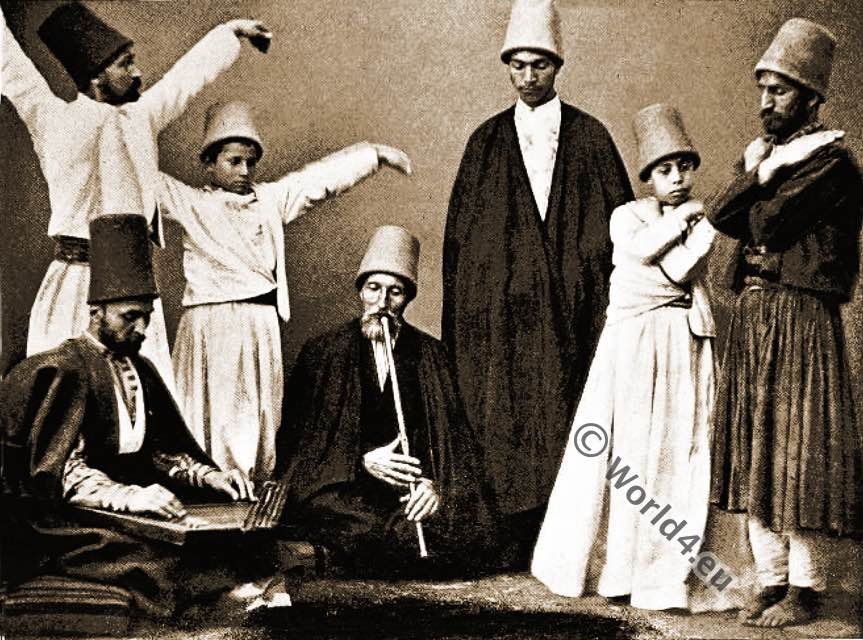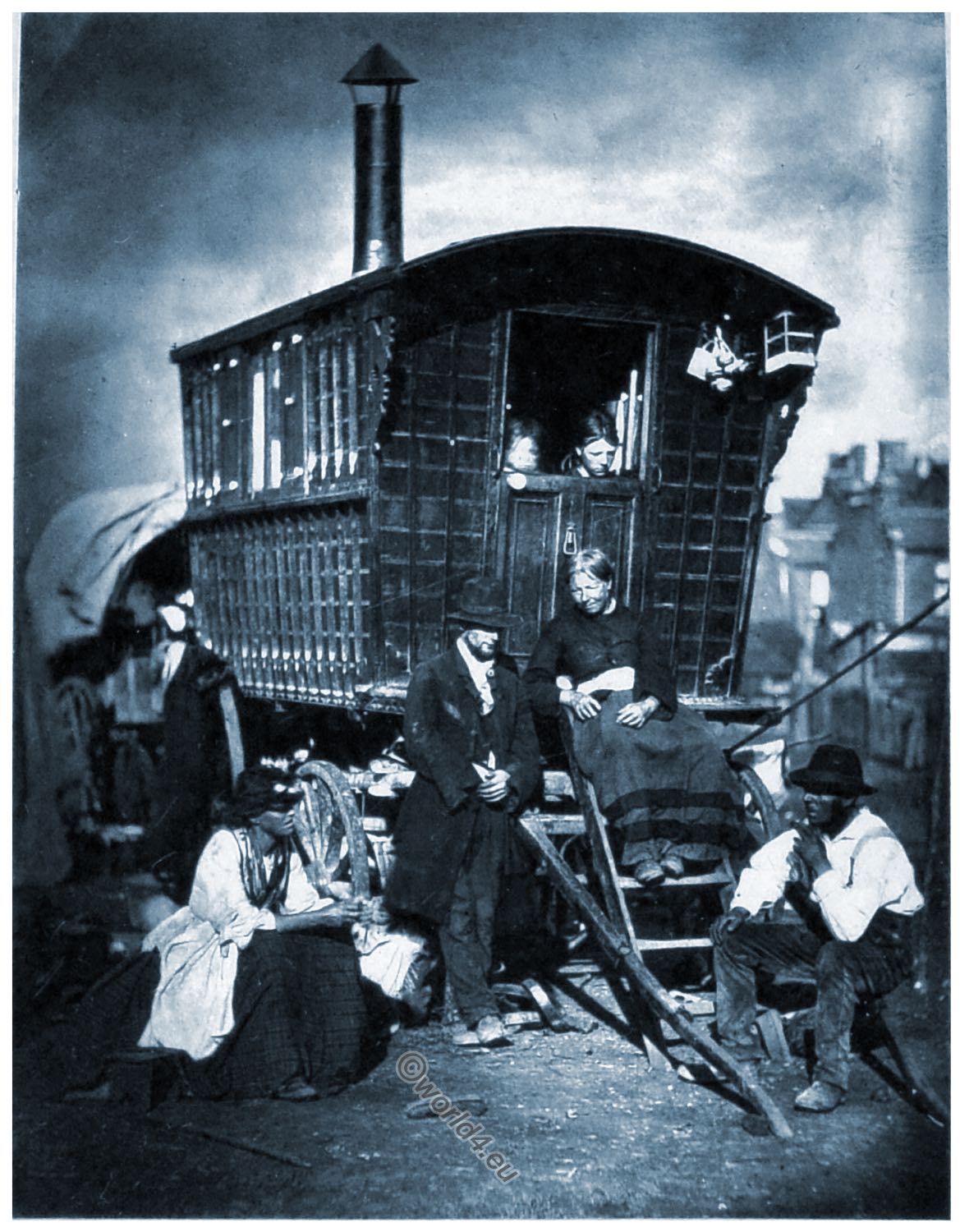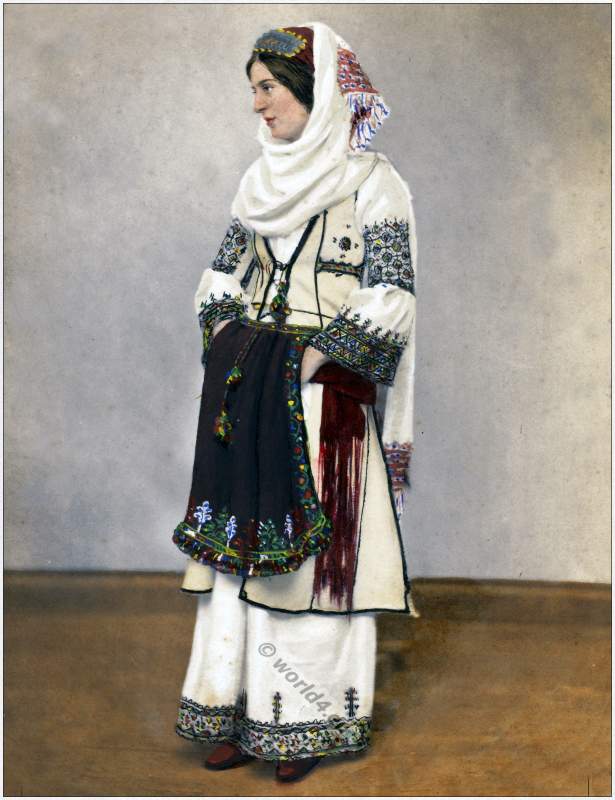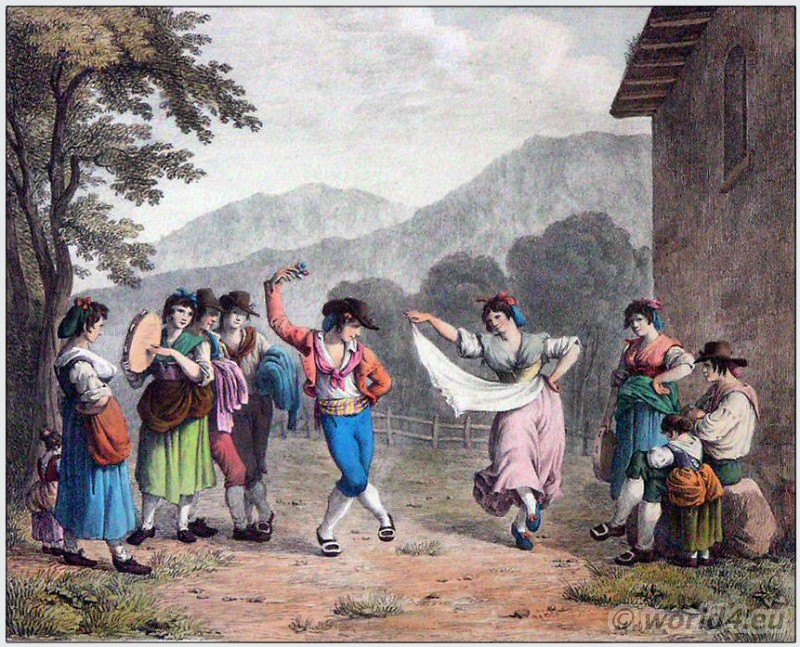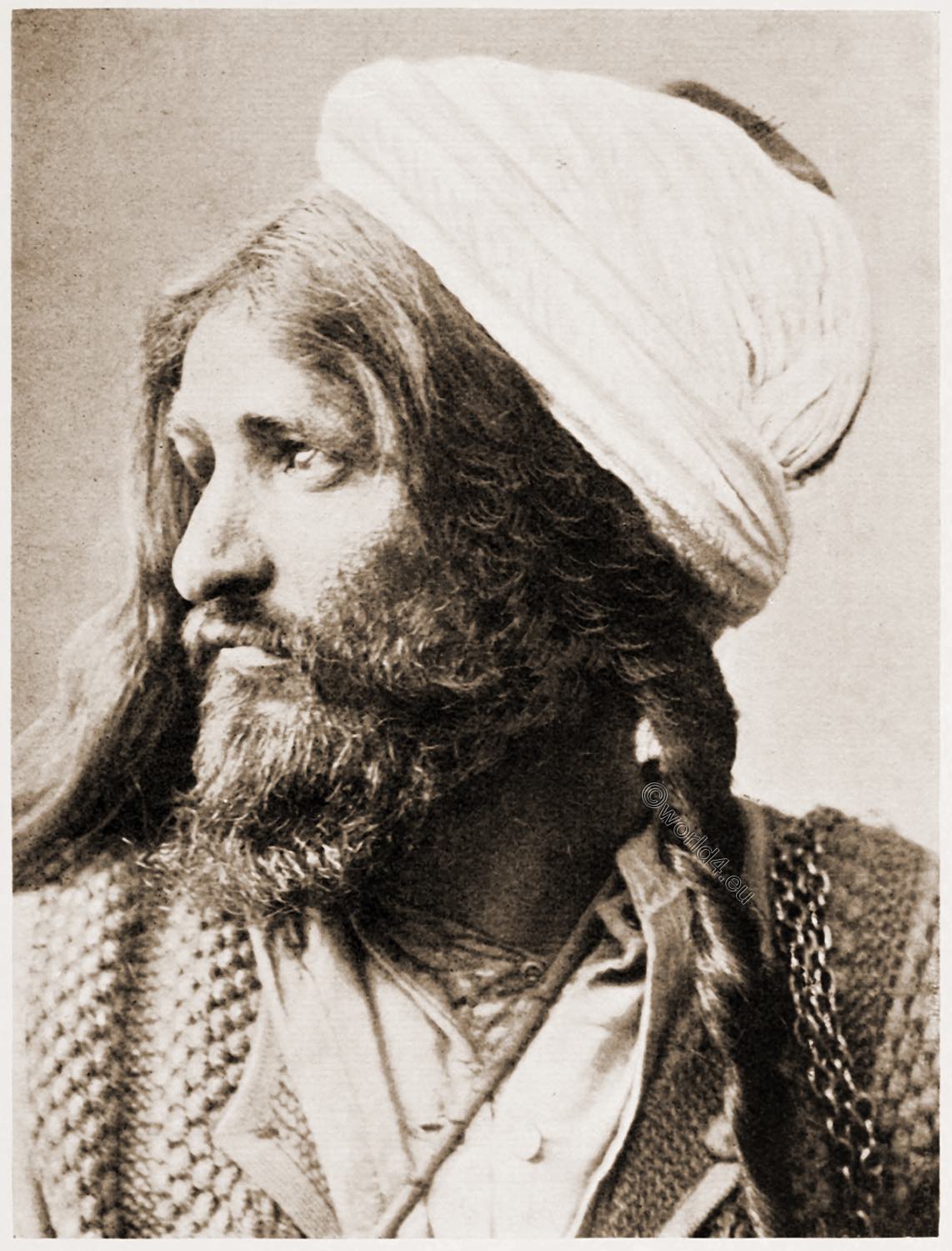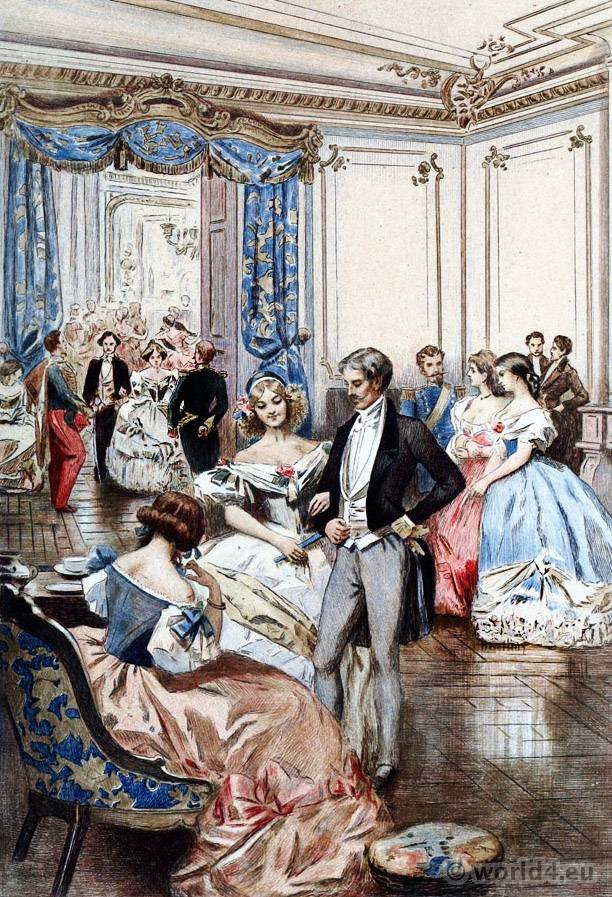Dancing Dervishes
We made up a party one Friday to visit the Dancing Dervishes, at their pretty little white marble mosque at Pera. It is enclosed within a courtyard, having a small cemetery shaded with cypresses, and a fountain enclosed in a handsome edifice, defended by gilt gratings from the street in which it stands. We passed in by the gateway, went along a clean, gravelled path, and came to the building. On entering we saw a very pretty octagonal interior, with a gallery running round three of its sides.
Taking up a good position on a raised and matted platform, divided from the body of the hall by a balustrade which runs round the building, we obtained an excellent view of the ceremonial service. We were not long waiting, for the brethren soon entered, and after certain prostrations and prayers in front of the Mihrab, they took up their places on the floor within the paling. Their dresses some what peculiar. A high, drab, felt cap, without a rim— like a large flower-pot or sugar-loaf—protects the head, and a long, loose cloak of brown or grey colour, reaching quite to their heels, bound at the waist by a girdle, completes their costume. The last to enter was the chief of the sect, a small, grave-looking old man with a long beard, distinguished in his dress only by the addition of a green band to his cap—the indication that he had made the pilgrimage to Mecca. The devotions began by the invocation to the Deity, after which the Sheik proceeded to the front of the Mihrab, and, with hands uplifted, offered with much devotion and earnestness the prayer to the Founder of their Order for Divine protection. The members of the brotherhood, after sitting awhile in Quaker- like meditation, rise one by one, and march round the enclosure to the accompaniment of monotonous music from reed-pipes and flutes, played by invisible musicians in some part of the gallery. As each one reaches the chief, he stops and kisses his hand, and is kissed in return.
Then, suddenly, at a given signal, they all throw oft their cloaks, and appear dressed in linen jackets with tight sleeves, and full- plaited white petticoats reaching to their heels. They now begin whirling round and round, using the left foot as a pivot, while they push themselves round with the right, with arms upraised and extended outwards, the palm of the right hand turned up, and the left turned towards the ground; their eyes closed and their heads reclining, they continue spinning round for half-an-hour or more without ceasing, their dresses floating out like large extinguishers; they keep time with the orchestra, and regulate their speed to that of the music. When tired of spinning, they once more march round, passing their chief and bowing as before; then, seating themselves in a circle, they resume their cloaks, while the brethren in the orchestra chant hymns of praise in honour of the Prophet. After another walk round, they suddenly start off and continue their twirling for another half-an-hour, by which time most of them show signs of having had enough of it, looking pale and tired. This whirling, I should imagine, is far more difficult of accomplishment than it looks, and must require years of practice before they become proficient. The dancing over, they resume their seats on the matted floor and join in the concluding prayers of the day, asking for Divine protection for the Sultan and their country before they retire. These ceremonies are very harmonious and interesting. The varied colours of their dresses, the wonderful way they go on twirling, the exactness and rapidity of their movements, and their skill in keeping clear of each other and maintaining their places with the regularity of machines, combine to make up a most peculiar sight.
Source: Life on the Bosphorus. Doings in the city of the Sultan. Turkey, past and present, including chronicles of the Caliphs from Mahomet to Abdul Hamid II. by William J. J. Spry. Published: London H. S. Nichols 1895.
Continuing
Discover more from World4 Costume Culture History
Subscribe to get the latest posts sent to your email.

